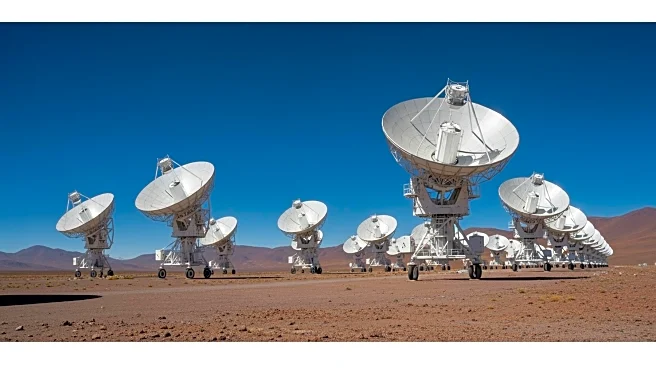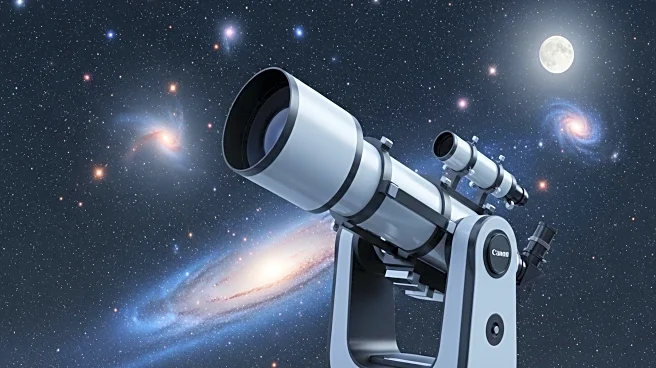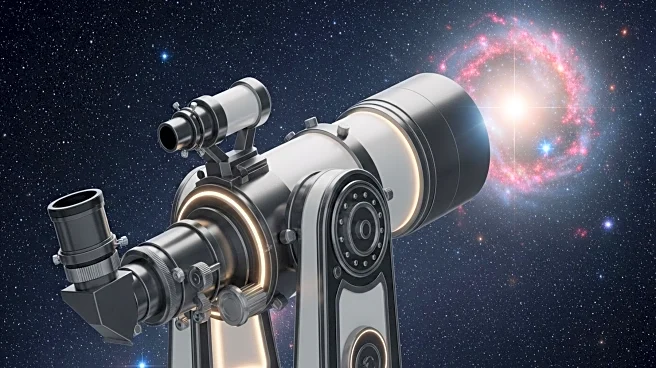What's Happening?
The Atacama Large Millimeter/submillimeter Array (ALMA), located in Chile's Atacama Desert, is an advanced astronomical facility operated by the European Southern Observatory and international partners.
ALMA consists of 66 high-precision antennas that observe the universe in millimeter/submillimeter wavelengths, which are invisible to the human eye. This array allows astronomers to study regions where young stars are obscured by dust and distant galaxies whose light has stretched and cooled over time. The antennas are spread across the Chajnantor Plateau, operating as a single, giant telescope with exceptional resolution.
Why It's Important?
ALMA's ability to observe in millimeter/submillimeter wavelengths provides critical insights into the formation of stars and galaxies, contributing significantly to our understanding of the universe. The facility's location at high altitude ensures minimal atmospheric interference, allowing for clearer cosmic signal reception. This enhances the study of cosmic phenomena that are otherwise difficult to observe, offering valuable data for astronomers and researchers worldwide. The findings from ALMA can influence future astronomical research and technology development.
What's Next?
As ALMA continues its operations, it is expected to provide further discoveries about the universe's hidden corners. The ongoing research may lead to advancements in understanding cosmic evolution and the lifecycle of stars. Future collaborations and technological upgrades could enhance ALMA's capabilities, potentially expanding its observational range and precision. The scientific community anticipates new findings that could reshape current astronomical theories.
Beyond the Headlines
ALMA's operations highlight the importance of international collaboration in scientific research. The facility's success demonstrates how shared resources and expertise can lead to groundbreaking discoveries. Additionally, ALMA's presence in the Atacama Desert underscores the significance of geographical location in astronomical research, as the site's unique conditions are ideal for radio astronomy.











